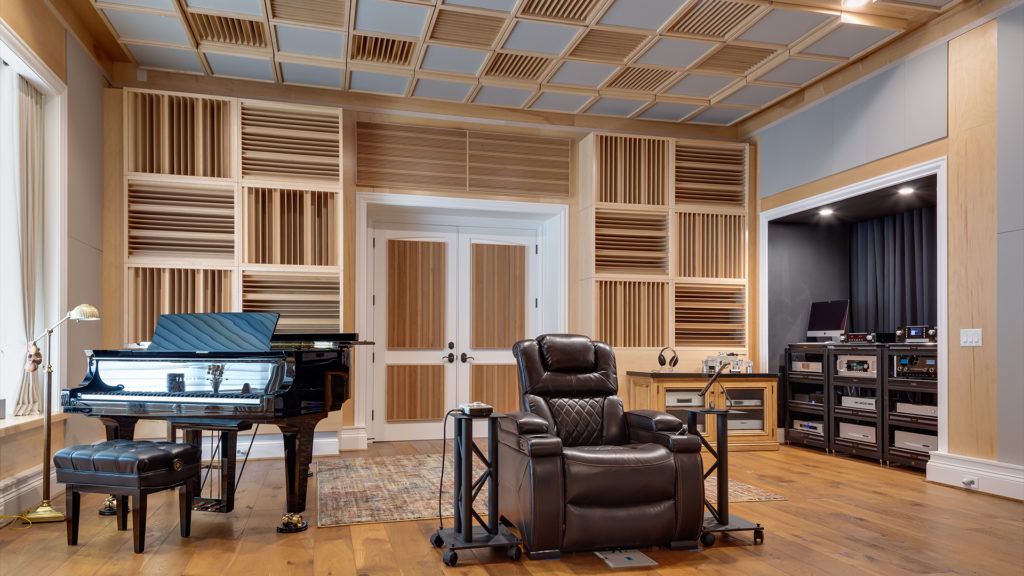
Table of Contents
Exploring the Basics of Acoustic Room Treatment
The search term acoustic room treatment can have many meanings. What acoustic issues are we going to use for acoustic room treatment? Are we going to use sound absorption acoustic room treatment or are we going to use diffusion acoustic room treatment. When we are dealing with any small room acoustical issue, we are divided into two types of room distortions.
We have lower frequency pressure distortion along with middle and high frequency reflections. Lower frequency pressure issues are termed room modes. Middle and high frequency reflections produce reverberation. Reverberation is defined as to how long a sound stays around within the room after it has been sung, spoken, or played. Room modes can either exaggerate certain octave bands or eliminate them from audibility completely.
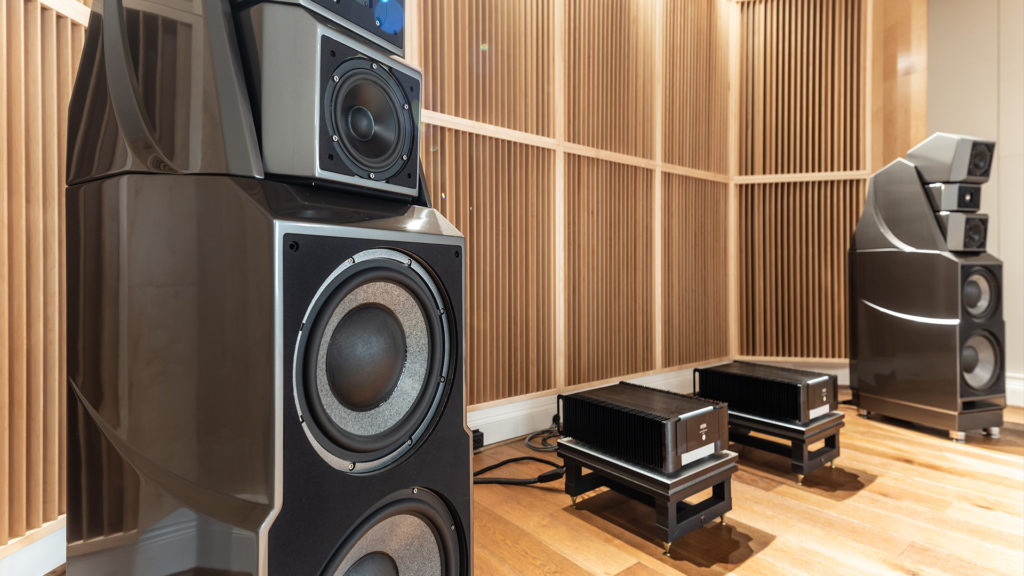
Room Modes and Reverberation: Key Elements in Acoustic Room Treatment
Room modes are low frequency energy waves that do not fit into the dimensions of the room. A 40 hz. wave of low frequency energy is 28′ long. If you do not have a 28′ width, length, and height, it will produce a room mode in strength and relationship to how much of its energy will fit into your room dimensions. When the room dimensions are not compatible mathematically with the wavelength the air between two walls, four walls, and six walls begins to vibrate faster.
This vibration produces in some cases a “black hole” where nothing can be heard or an atomic explosion where too much bass is heard. This is where the term “bass boom” came from. Room modes and reflections must be treated so that they do not voice their particular forms of distortion into the room.
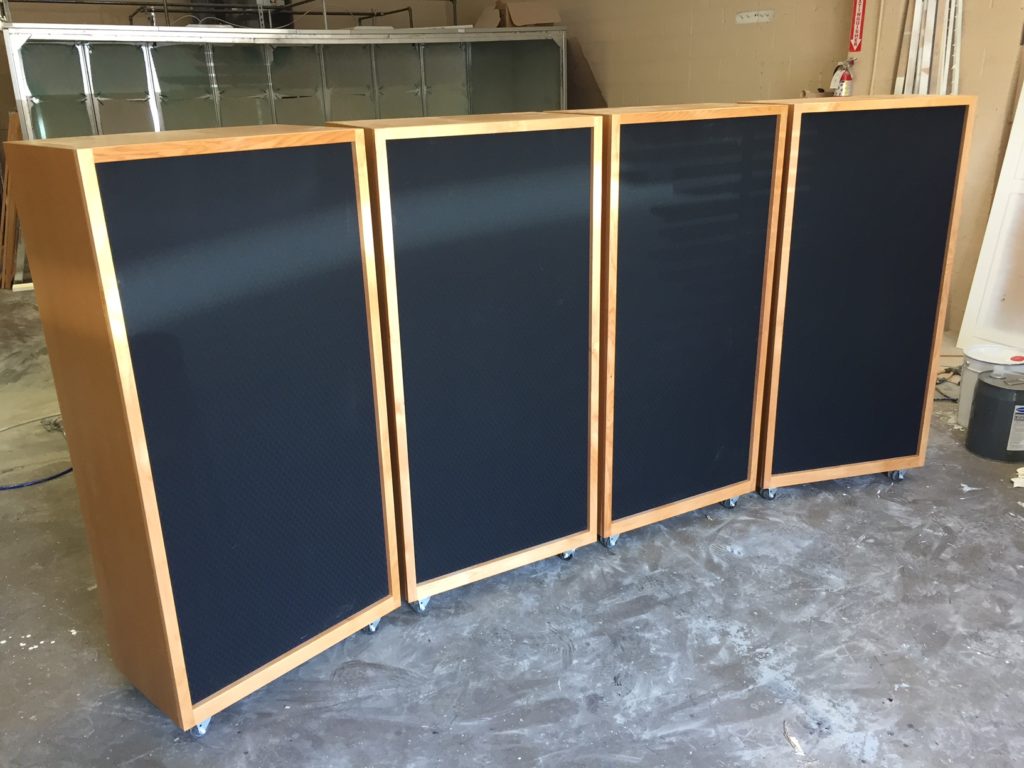
Technologies in Acoustic Room Treatment: Absorption and Reflection Management
When we use any form of acoustic room treatment, we are using two main types of technology. To treat low frequency unwanted pressures between our walls, we look towards a pressure based technology termed diaphragmatic absorption. To manage reflections of lower reverberation times, we use open celled foam technology. The unwanted room modal pressures are determined by the dimensions of our rooms. The usage or what we do inside the room to generate sound energy is the other side of the equation.
A vocal room will not have lower frequency room modal issues since human voice does not enter the lower frequency regions. Reflections for voice from the walls, floor, and ceiling become the main issues to treat. A drum room will have full range energy output. We will have low, middle, and high frequency issues to contend with. In a drum room we need both diaphragmatic absorption along with open celled foam.
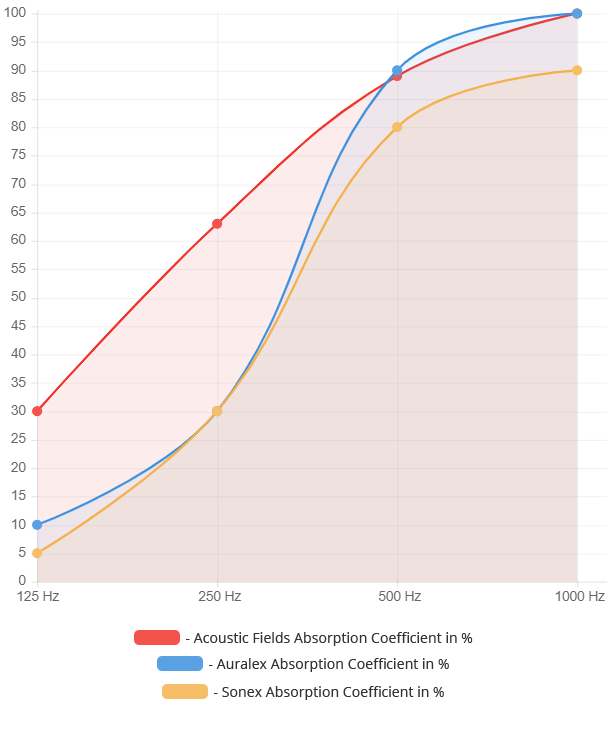
Advanced Foam Technology in Acoustic Room Treatment
At www.acousticfields.com, our foam technology took 8 years to develop. We wanted the smoothest curve we could get from 125 – 500 hz. This is the most critical treatment frequency range for managing reverberation along with human voice. Notice the smooth progression in absorption from 125 hz. – 500 hz. Notice the dips in the response of the next two largest sellers. Diaphragmatic absorption must exhibit the same power yet smooth absorption response.
The rates and levels of absorption are critical in any pressure absorbing device. Notice our ACDA-12 unit’s response. It starts at 30 hz. and goes through 50 hz. Notice how the absorption goes as it starts at 30 hz. and goes through 50 hz. This is the same linear type of treatment response that one must have in order to produce the highest resolutions our rooms require.
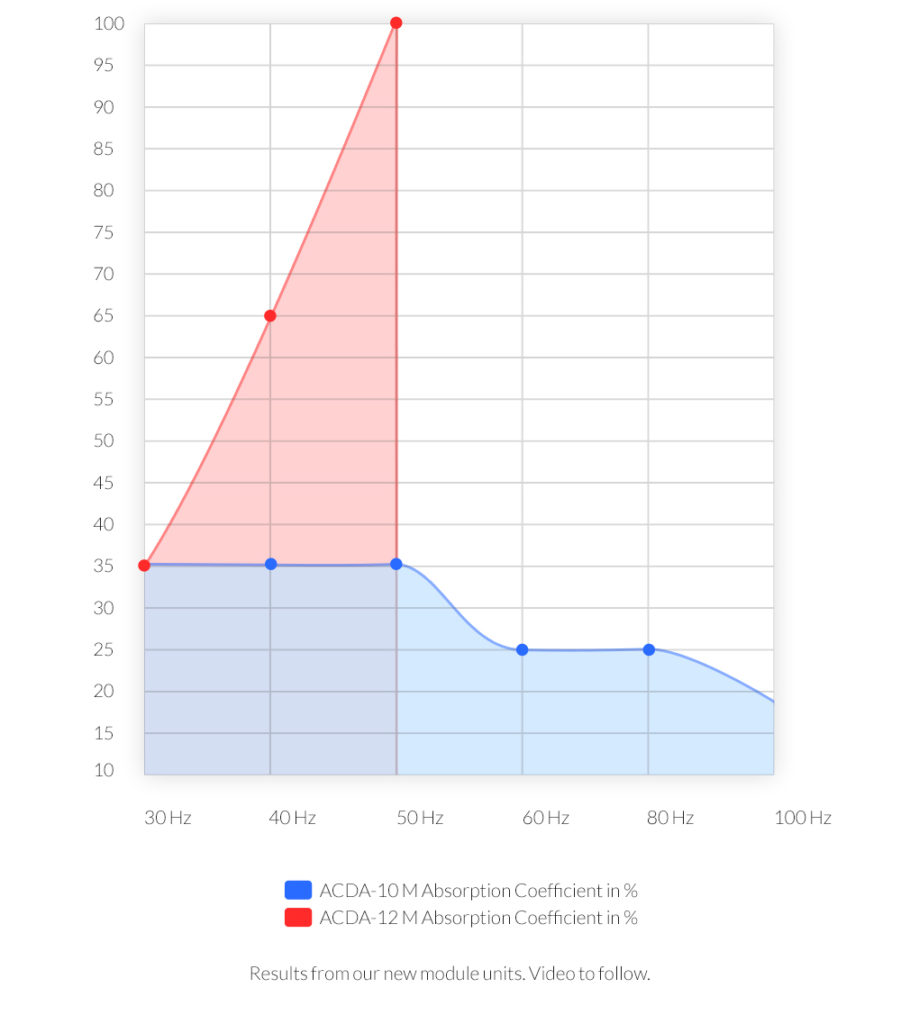
Tailoring Acoustic Room Treatment to Room Dynamics
Acoustic room treatment comes in two major flavors. We have low frequency pressure based technologies such as diaphragmatic absorption to treat unwanted room modal pressures. We also have reflection management technology using lightweight acoustical foam technology. Rooms are a balance of both types with the size of the room along with usage determining the resolution required.
It also determines the amount of acoustic room treatment that will be required on each of the three soundfields. In any small room, we have three sound fields that must be treated. We have room modal issues floor to ceiling, sidewall to sidewall, and front to rear of our rooms. All three of these sound fields will require both diaphragmatic absorption along with open celled foam for reverberation.


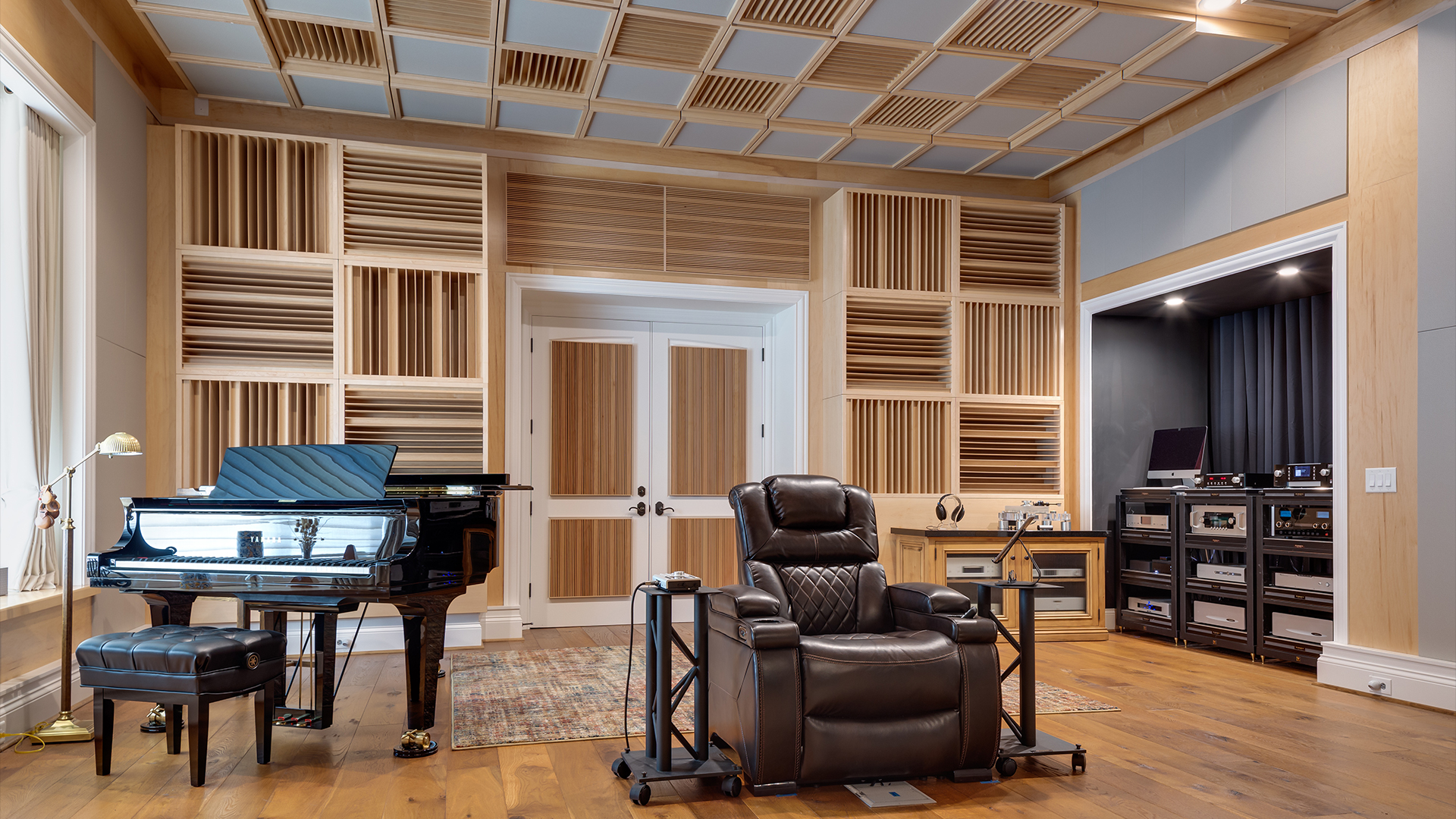





The discussion on ductwork noise transmission from Acoustic Fields highlights crucial aspects of HVAC system acoustics. The movement of air…
Great build plans. thank you Denis
You must use absorption. Never place a chair against a wall.
A friend and I built several diffusors using these plans and they turned out absolutely beautiful. Very good instructions and…